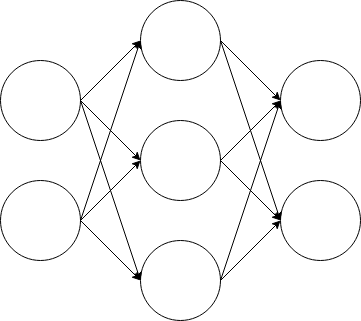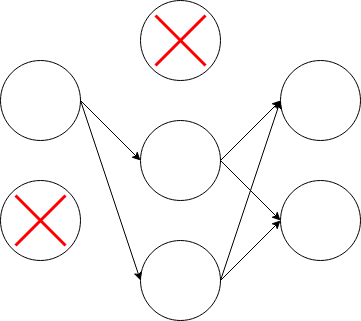Overfitting and Dropout in Neural Networks
In this post we are going to take a look at a problem called overfitting and it’s potential solution: dropout (or dropout layer). This is relevant for neural networks and deep learning.
Overfitting
First, let’s take a look at the problem that we are trying to get rid of: overfitting. Overfitting happens when the model adapts to training data too well. This usually means that we get excellent results with training data, but poor results with any new data. Overfitting is sometimes called overtraining in machine learning.
Below you can see a visualization of the issue:

The black points are the original data points. The red line is the overfitted model. It learns from the data as well as the noise. The blue line is a better model. This is an example of a situation where the model is giving us more useful information than the raw data itself (as long as we don’t do overfitting).
Using dropout to solve the problem
There are many ways to solve the presented problem. One solution often used in deep neural nets is dropout. Below is a picture of a typical neural net architecture.

Now dropout comes to play. The basic idea is very simple. Just randomly drop some units in the network in the training phase. This is what it might look like:

The idea is to get all of the neurons to contribute to the model evenly (model averaging). This way individual neurons can’t dominate by themselves.
Example implementation
How to implement dropout in practice? Let’s look at Keras, which is a high-level neural network API. It will be integrated into TensorFlow soon, but can also use other backends, such as CNTK.
Keras Sequential model allows us to stack model layers linearly.
Any neural network layer, be it a normal densely connected neural layer or
a convolutional layer, can be added simply using model.add(). In this case,
the dropout becomes just another layer. First we need to
import it.
from keras.layers import Dropout
After this, you only need to add a dropout layer after any neural network layer.
model.add(Dropout(rate=0.25))
In the above example 25% of the input units of a layer are set to 0 during training. It really couldn’t be simpler.
Conclusion
Overfitting is a very real and common problem in machine learning. Dropout is a simple and effective regularization technique to encourage model learning across all neurons in the network. This creates a more generalized model that works better with new data. Using dropout can be very simple with existing frameworks.